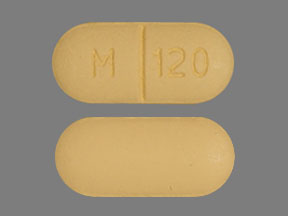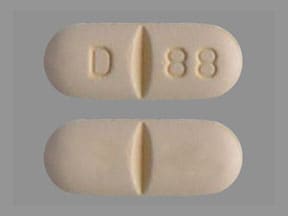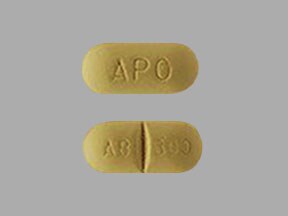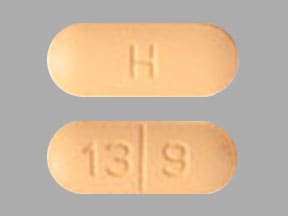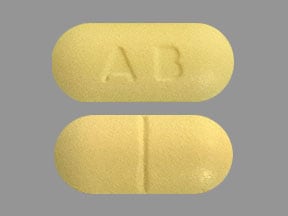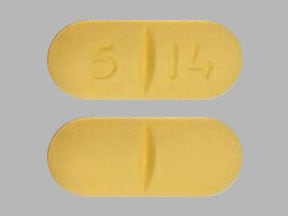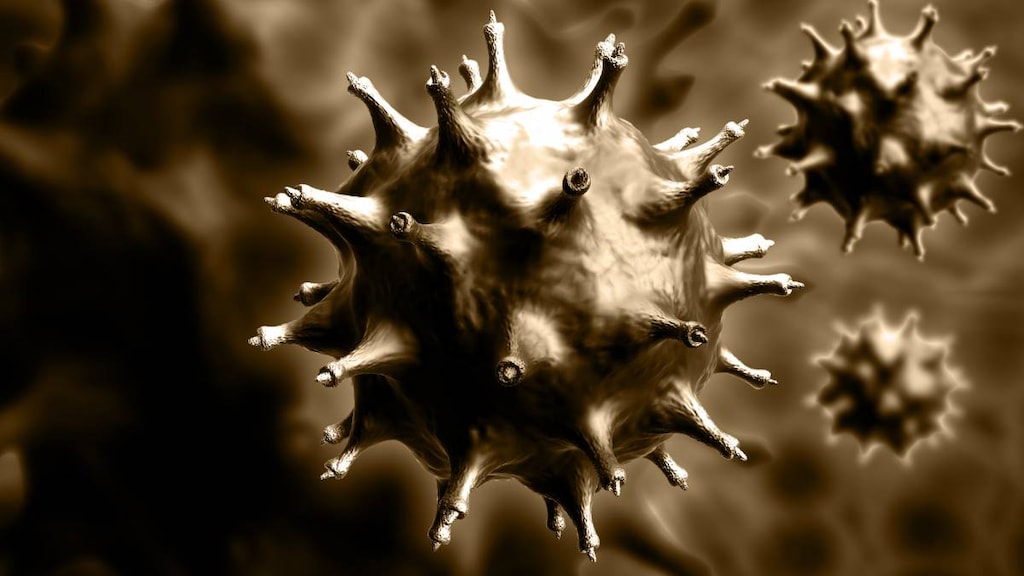Boxed Warning
Hypersensitivity reactions:
Serious and sometimes fatal hypersensitivity reactions, with multiple organ involvement, have occurred with abacavir.
Patients who carry the HLA-B*5701 allele are at a higher risk of a hypersensitivity reaction to abacavir; although, hypersensitivity reactions have occurred in patients who do not carry HLA-B*5701 allele.
Abacavir is contraindicated in patients with a prior hypersensitivity reaction to abacavir and in HLA-B*5701–positive patients. All patients should be screened for the HLA-B*5701 allele prior to initiating therapy with abacavir or reinitiation of therapy with abacavir, unless patients have a previously documented HLA-B*5701 allele assessment. Discontinue abacavir immediately if a hypersensitivity reaction is suspected, regardless of HLA-B*5701 status and even when other diagnoses are possible.
Following a hypersensitivity reaction to abacavir, never restart abacavir or any abacavir-containing product because more severe symptoms including death, can occur within hours. Similar severe reactions have also occurred rarely following the reintroduction of abacavir-containing products in patients who have no history of abacavir hypersensitivity.
Dosage Forms
Excipient information presented when available (limited, particularly for generics); consult specific product labeling.
Solution, Oral:
Ziagen: 20 mg/mL (240 mL) [contains methylparaben, propylene glycol, propylparaben, saccharin sodium; strawberry-banana flavor]
Generic: 20 mg/mL (240 mL)
Tablet, Oral:
Ziagen: 300 mg [scored]
Generic: 300 mg
Pharmacology
Mechanism of Action
Nucleoside reverse transcriptase inhibitor. Abacavir is a guanosine analogue which is phosphorylated to carbovir triphosphate which interferes with HIV viral RNA-dependent DNA polymerase resulting in inhibition of viral replication.
Pharmacokinetics/Pharmacodynamics
Absorption
Rapid and extensive absorption
Distribution
Vd: 0.86 ± 0.15 L/kg; CSF to plasma AUC ratio: 27% to 33%
Metabolism
Hepatic via alcohol dehydrogenase and glucuronyl transferase to inactive carboxylate and glucuronide metabolites; not significantly metabolized by cytochrome P450 enzymes; intracellulary metabolized to carbovir triphosphate.
Excretion
Urine: ~83% (1.2% as unchanged drug, 30% as 5'-carboxylic acid metabolite, 36% as the glucuronide, and 15% as other metabolites); feces (16% total dose)
Clearance (apparent): Single dose 8 mg/kg (Hughes 1999): Pediatric patients ≥3 months to ≤13 years: 17.84 mL/minute/kg; Adults: 10.14 mL/minute/kg
Time to Peak
Pediatric patients ≥3 months to ≤13 years: Within 1.5 hours (Hughes 1999); Adults: 0.7 to 1.7 hours
Half-Life Elimination
Serum:
Pediatric patients ≥3 months to ≤13 years: 1 to 1.5 hours (Hughes 1999; Kline 1999)
Adults: 1.54 ± 0.63 hours
Hepatic impairment (mild): Increases half-life by 58%
Intracellular: 12 to 26 hours
Protein Binding
50%
Use in Specific Populations
Special Populations: Hepatic Function Impairment
In mild hepatic impairment (Child-Pugh score 5 to 6), AUC increased 89%.
Use: Labeled Indications
HIV-1 infection: Treatment of HIV-1 infection in combination with other antiretroviral agents
Contraindications
Hypersensitivity to abacavir or any component of the formulation; patients who are positive for the HLA-B*5701 allele; moderate to severe hepatic impairment
Dosage and Administration
Dosing: Adult
HIV-1 infection, treatment: Oral: 300 mg twice daily or 600 mg once daily in combination with other antiretroviral agents.
Dosing: Geriatric
Refer to adult dosing.
Dosing: Pediatric
HIV-1 infection, treatment: Note: Use in combination with other antiretroviral (ARV) agents. Gene mutation and ARV resistance patterns should be evaluated (refer to https://www.iasusa.org/ for more information) when necessary.
Infants ≥3 months, Children, and Adolescents: Oral:
Twice-daily dosing:
Weight-directed dosing: Oral solution: 8 mg/kg/dose twice daily; maximum dose: 300 mg/dose. Note: Weight-band dosing may be used in certain patients weighing at least 14 kg; especially rapid growing younger children (HHS [pediatric] 2019).
Weight-band dosing for patients ≥14 kg: Tablets (scored 300 mg tablets), oral solution:
14 to <20 kg: 150 mg twice daily.
20 to <25 kg: 150 mg in the morning and 300 mg in the evening.
≥25 kg: 300 mg twice daily.
Once-daily dosing: Note: For infants and young children beginning therapy with liquid formulations of abacavir, initiation with once-daily abacavir is not generally recommended. In clinically stable patients with undetectable viral load/percentage for more than 6 months (24 weeks) on the liquid formulation of abacavir twice daily, the daily dose can be changed from twice daily to once daily with liquid or tablet formulations. Initiation with once-daily dosing is recommended for children who can be treated with tablet formulation (HHS [pediatric] 2019).
Weight-directed dosing: Oral solution: 16 mg/kg/dose once daily; maximum dose: 600 mg/dose. Note: Weight-band dosing may be used in certain patients weighing ≥14 kg; especially rapid growing younger children (HHS [pediatric] 2019).
Weight-band dosing for patients ≥14 kg: Tablets (scored 300 mg tablets), oral solution:
14 to <20 kg: 300 mg once daily.
20 to <25 kg: 450 mg once daily.
≥25 kg: 600 mg once daily.
Administration
May be administered with or without food.
Storage
Store at 20°C to 25°C (68°F to 77°F). Oral solution may be refrigerated; do not freeze.
Abacavir Images
Drug Interactions
Cabozantinib: MRP2 Inhibitors may increase the serum concentration of Cabozantinib. Monitor therapy
Cladribine: Agents that Undergo Intracellular Phosphorylation may diminish the therapeutic effect of Cladribine. Avoid combination
Methadone: May diminish the therapeutic effect of Abacavir. Abacavir may decrease the serum concentration of Methadone. Monitor therapy
Orlistat: May decrease the serum concentration of Antiretroviral Agents. Monitor therapy
Protease Inhibitors: May decrease the serum concentration of Abacavir. Monitor therapy
Adverse Reactions
Rates of adverse reactions were defined during combination therapy with other antiretrovirals.
>10%:
Central nervous system: Headache (adults: ≤13%; infants, children, & adolescents: 1%), fatigue (≤12%), malaise (≤12%)
Gastrointestinal: Nausea (7% to 19%)
1% to 10%:
Central nervous system: Abnormal dreams (≤10%), sleep disorder (≤10%), chills (≤9%), migraine (≤7%), depression (6%), dizziness (6%), anxiety (5%)
Dermatologic: Skin rash (5% to 7%)
Endocrine & metabolic: Hypertriglyceridemia (grades 3/4: 2% to 6%)
Gastrointestinal: Nausea and vomiting (9% to 10%), diarrhea (7%), abdominal pain (≤6%), gastritis (≤6%), gastrointestinal signs and symptoms (≤6%), increased serum amylase (grades 3/4: 2% to 4%), vomiting (2%)
Hematologic & oncologic: Neutropenia (grades 3/4: 2% to 5%), thrombocytopenia (grades 3/4: 1%)
Hepatic: Increased serum alanine aminotransferase (grades 3/4: 6%), increased serum aspartate aminotransferase (grades 3/4: 6%)
Hypersensitivity: Drug-induced hypersensitivity (9%), hypersensitivity reaction (including anaphylaxis and multiorgan failure; 8%; excluding subjects carrying the HLA-B*5701 allele: 1%)
Neuromuscular & skeletal: Increased creatine phosphokinase (grades 3/4: 7% to 8%), musculoskeletal pain (5% to 6%)
Respiratory: ENT infection (5%), viral respiratory tract infection (5%), bronchitis (4%), pneumonia (infants, children, & adolescents: 4%)
Miscellaneous: Fever (≤9%)
Frequency not defined:
Endocrine & metabolic: Increased gamma-glutamyl transferase
Gastrointestinal: Pancreatitis
<1%, postmarketing, and/or case reports: Anemia, autoimmune disease, erythema multiforme, Graves disease, Guillain-Barre syndrome, hepatomegaly, hyperglycemia, immune reconstitution syndrome, lactic acidosis, leukopenia, lipotrophy, liver steatosis, myocardial infarction, pain, polymyositis, redistribution of body fat, renal function abnormality, Stevens-Johnson syndrome, toxic epidermal necrolysis
Warnings/Precautions
Concerns related to adverse effects:
- Hypersensitivity reactions: [US Boxed Warning]: Serious and sometimes fatal hypersensitivity reactions have occurred. Patients who carry the HLA-B*5701 allele are at a higher risk for a hypersensitivity reaction to abacavir, although hypersensitivity reactions have occurred in patients who do not carry the HLA-B*5701 allele. All patients should be screened for the HLA-B*5701 allele prior to initiating or reinitiation of therapy unless patients have had a previously documented HLA-B*5701 allele assessment. Discontinue abacavir if a hypersensitivity reaction is suspected. Abacavir is contraindicated in patients who have the HLA-B*5701 allele or in patients with a prior hypersensitivity reaction to abacavir. Reintroduction of any abacavir-containing product can result in life-threatening or fatal hypersensitivity reactions, even in patients who have no history of hypersensitivity to abacavir therapy. Such reactions can occur within hours. An allergy to abacavir should be documented in the medical record of allele-positive patients. Reactions usually occur within 9 days of starting abacavir; ~90% occur within 6 weeks, although these reactions may occur at any time during therapy (HHS [adult] 2017). These reactions usually include signs or symptoms from two or more of the following: Fever, skin rash, constitutional symptoms (malaise, fatigue, aches), respiratory symptoms (eg, pharyngitis, dyspnea, cough), and GI symptoms (eg, abdominal pain, diarrhea, nausea, vomiting). Other signs and symptoms include lethargy, headache, myalgia, edema, abnormal chest x-ray findings, arthralgia and paresthesia. Anaphylaxis, liver failure, renal failure, hypotension, adult respiratory distress syndrome, respiratory failure, myolysis, and death have occurred in association with hypersensitivity reactions. Physical findings (lymphadenopathy, mucous membrane lesions, and rash [maculopapular, urticarial or variable]) may occur. Erythema multiforme has also been reported. Laboratory abnormalities (eg, elevated liver function tests, elevated creatine phosphokinase, elevated creatinine, and lymphopenia) may occur. Abacavir should be permanently discontinued if hypersensitivity cannot be ruled out, even when other diagnoses are possible and regardless of HLA-B*5701 status. Abacavir SHOULD NOT be restarted because more severe symptoms may occur within hours, including LIFE-THREATENING HYPOTENSION AND DEATH. If abacavir is restarted following an interruption in therapy not associated with symptoms of a hypersensitivity reaction, carefully evaluate the patient for previously unsuspected symptoms of hypersensitivity. Do not restart if hypersensitivity is suspected or cannot be ruled out regardless of HLA-B*5701 status. If abacavir is restarted, continually monitor for symptoms of a hypersensitivity reaction. Make the patient aware that reintroduction should only take place if medical care is readily accessible.
- Immune reconstitution syndrome: Patients may develop immune reconstitution syndrome resulting in the occurrence of an inflammatory response to an indolent or residual opportunistic infection during initial HIV treatment or activation of autoimmune disorders (eg, Graves disease, polymyositis, Guillain-Barré syndrome) later in therapy; further evaluation and treatment may be required.
- Lactic acidosis/hepatomegaly: Lactic acidosis and severe hepatomegaly with steatosis have been reported with nucleoside analogues, including fatal cases; use with caution in patients with risk factors for liver disease (risk may be increased with female gender or obesity) and suspend treatment in any patient who develops clinical or laboratory findings suggestive of lactic acidosis or hepatotoxicity (transaminase elevation may/may not accompany hepatomegaly and steatosis).
Disease-related concerns:
- Coronary heart disease: Use has been associated with an increased risk of MI in some cohort studies (Elion 2018; HHS [adult] 2017). Consider using with caution in patients with risks for coronary heart disease and minimizing modifiable risk factors (eg, hypertension, hyperlipidemia, diabetes mellitus, smoking) prior to use.
- Hepatic impairment: Use with caution and adjust dosage in patients with mild hepatic impairment (contraindicated in moderate to severe impairment).
Concurrent drug therapy issues:
- Drug-drug interactions: Potentially significant interactions may exist, requiring dose or frequency adjustment, additional monitoring, and/or selection of alternative therapy. Consult drug interactions database for more detailed information.
Dosage form specific issues:
- Propylene glycol: Some dosage forms may contain propylene glycol; large amounts are potentially toxic and have been associated with hyperosmolality, lactic acidosis, seizures, and respiratory depression; use caution (AAP 1997; Zar 2007).
- Polysorbate 80: Some dosage forms may contain polysorbate 80 (also known as Tweens). Hypersensitivity reactions, usually a delayed reaction, have been reported following exposure to pharmaceutical products containing polysorbate 80 in certain individuals (Isaksson 2002; Lucente 2000; Shelley 1995). Thrombocytopenia, ascites, pulmonary deterioration, and renal and hepatic failure have been reported in premature neonates after receiving parenteral products containing polysorbate 80 (Alade 1986; CDC 1984). See manufacturer's labeling.
- Sorbitol: Oral solution contains sorbitol. Use oral solution with caution in patients who are fructose intolerant; may experience abdominal discomfort and/or diarrhea with administration of the oral solution.
Other warnings/precautions:
- Appropriate use: Abacavir should always be used as a component of a multidrug regimen. Do not use abacavir/lamivudine (plus efavirenz, raltegravir, ritonavir- or cobicistat-boosted atazanavir, or ritonavir- or cobicistat-boosted darunavir) in adolescent and adult HIV-1 patients with a pre-antiretroviral therapy HIV RNA >100,000 copies/mL (HHS [adult] 2017).
Monitoring Parameters
CBC with differential, serum creatine kinase, CD4 count, HIV RNA plasma levels, serum transaminases, triglycerides, serum amylase; HLA-B*5701 genotype status prior to initiation of therapy and prior to reinitiation of therapy in patients of unknown HLA-B*5701 status; signs and symptoms of hypersensitivity
Pregnancy
Pregnancy Considerations
Abacavir has a high level of transfer across the human placenta.
No increased risk of overall birth defects has been observed following first trimester exposure according to data collected by the antiretroviral pregnancy registry. Maternal antiretroviral therapy (ART) may be associated with adverse pregnancy outcomes including preterm delivery, stillbirth, low birth weight, and small for gestational age infants. Actual risks may be influenced by maternal factors, such as disease severity, gestational age at initiation of therapy, and specific ART regimen, therefore close fetal monitoring is recommended. Because there is clear benefit to appropriate treatment, maternal ART should not be withheld due to concerns for adverse neonatal outcomes. Long-term follow-up is recommended for all infants exposed to antiretroviral medications; children without HIV but who were exposed to ART in utero and develop significant organ system abnormalities of unknown etiology (particularly of the CNS or heart) should be evaluated for potential mitochondrial dysfunction. Cases of lactic acidosis and hepatic steatosis have been reported in pregnant women with use of nucleoside reverse transcriptase inhibitors (NRTIs).
The Health and Human Services (HHS) perinatal HIV guidelines consider abacavir a preferred NRTI for pregnant females living with HIV who are antiretroviral-naive, who have had ART therapy in the past but are restarting, who require a new ART regimen (due to poor tolerance or poor virologic response of current regimen), and who are not yet pregnant but are trying to conceive. In addition, females who become pregnant while taking abacavir may continue if viral suppression is effective and the regimen is well tolerated. The pharmacokinetics of abacavir are not significantly changed by pregnancy and dose adjustment is not needed for pregnant females.
The HHS perinatal HIV guidelines consider abacavir in combination with lamivudine to be a preferred NRTI backbone for initial therapy in antiretroviral-naive pregnant females (do not use in females who are positive for the HLA-B*5701 allele). This backbone is not recommended with atazanavir/ritonavir or efavirenz if pretreatment HIV RNA is >100,000 copies/mL. In addition, the HHS perinatal HIV guidelines consider abacavir in combination with lamivudine and dolutegravir to be a preferred integrase strand transfer inhibitor regimen for initial therapy in antiretroviral-naive pregnant females.
In general, ART is recommended for all pregnant females living with HIV to keep the viral load below the limit of detection and reduce the risk of perinatal transmission. Therapy should be individualized following a discussion of the potential risks and benefits of treatment during pregnancy. Monitoring of pregnant females is more frequent than in nonpregnant adults. ART should be continued postpartum for all females living with HIV and can be modified after delivery.
Health care providers are encouraged to enroll pregnant females exposed to antiretroviral medications as early in pregnancy as possible in the Antiretroviral Pregnancy Registry (1-800-258-4263 or http://www.APRegistry.com). Health care providers caring for pregnant females living with HIV and their infants may contact the National Perinatal HIV Hotline (888-448-8765) for clinical consultation (HHS [perinatal] 2019).
Patient Education
What is this drug used for?
- It is used to treat HIV infection.
Frequently reported side effects of this drug
- Vomiting
- Headache
- Nausea
- Loss of strength and energy
- Trouble sleeping
- Nightmares
Other side effects of this drug: Talk with your doctor right away if you have any of these signs of:
- Allergic reaction with organ failure like fever, rash, fatigue, flu-like signs, nausea, vomiting, diarrhea, abdominal pain, sore throat, cough, or difficulty breathing
- Lactic acidosis like fast breathing, fast heartbeat, abnormal heartbeat, vomiting, fatigue, shortness of breath, severe loss of strength and energy, severe dizziness, feeling cold, or muscle pain or cramps
- Liver problems like dark urine, fatigue, lack of appetite, nausea, abdominal pain, light-colored stools, vomiting, or yellow skin.
- Kidney problems like not able to pass urine, blood in the urine, change in amount of urine passed, or weight gain
- Depression
- Chest Pain
- Severe dizziness
- Passing out
- Eye irritation
- Mouth sores
- Muscle pain
- Joint pain
- Swollen glands
- Burning or numbness feeling
- Edema
- Chills
- Infection
- Signs of a significant reaction like wheezing; chest tightness; fever; itching; bad cough; blue skin color; seizures; or swelling of face, lips, tongue, or throat.
Note: This is not a comprehensive list of all side effects. Talk to your doctor if you have questions.
Consumer Information Use and Disclaimer: This information should not be used to decide whether or not to take this medicine or any other medicine. Only the healthcare provider has the knowledge and training to decide which medicines are right for a specific patient. This information does not endorse any medicine as safe, effective, or approved for treating any patient or health condition. This is only a brief summary of general information about this medicine. It does NOT include all information about the possible uses, directions, warnings, precautions, interactions, adverse effects, or risks that may apply to this medicine. This information is not specific medical advice and does not replace information you receive from the healthcare provider. You must talk with the healthcare provider for complete information about the risks and benefits of using this medicine.
